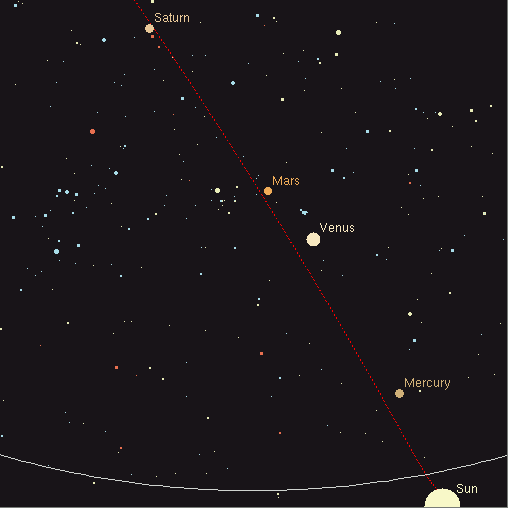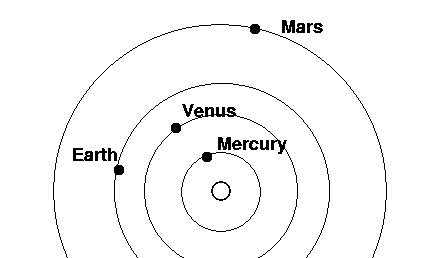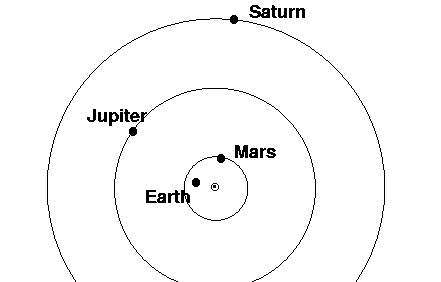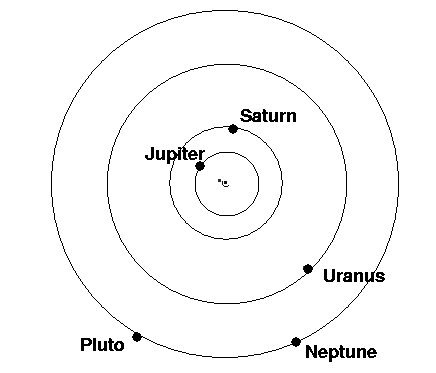
The planets are the focus of tonight's Open House. The classical world knew of 5 planets (plus the Sun and Moon) which wandered through the sky: Mercury, Venus, Mars, Jupiter and Saturn. Tonight, if it's clear, you will have a chance to see them all!
Don't worry if you can't see them all tonight: they will all be visible for another week or so. After that, though Mercury will sink down below the horizon, and it will be another few years before they all line up again.
If you look to the west soon after sunset, you should see several bright objects all in a line:

Mercury is the closest to the horizon, and the hardest to see. You may need binoculars to find it, but once you know where to look, you should be able to see it with your naked eye. Venus is by far the brightest; use it and the dimmer Mars to guide your eye towards Mercury one way, and up the other to Saturn.
If we pull back and look with a wider angle, showing almost the entire sky, we can see two other wanderers: the Moon and Jupiter:

Why are the all lined up? All the planets orbit the Sun in nearly the same plane, like ants walking around on a pizza (ick). If we were to look down on the solar system from above right now, we'd see that most of the planets are over on one side of the Sun, and the Earth is over on the other. Here's a closeup view, showing only the inner planets:

If we fly higher above the solar system, we can see Jupiter and Saturn. Notice that Jupiter doesn't really lie with the other planets to the right; that's why we see it farthest from the Sun and other planets tonight.

If we fly even higher, the outer planets Uranus, Neptune, and Pluto all come into view. They are definitely NOT clumped together with the other planets, so we would not see them in the western sky after sunset; they would appear over in the eastern sky before sunrise. However, they are so faint that one needs a telescope to see them anyway, so their absence shouldn't bother us.

Here's a table of planetary distances tonight. The distance
Planet Distance from Earth
(millions of kilometers)
-----------------------------------------
Mercury 132
Venus 106
Mars 287
Jupiter 678
Saturn 1354
-----------------------------------------
Questions for you: